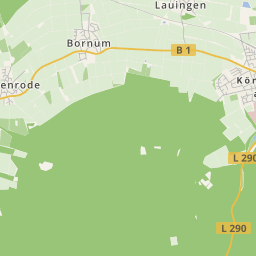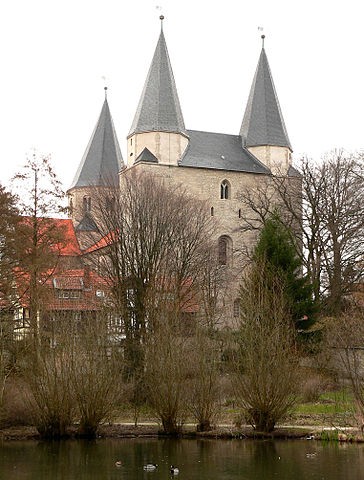











If you plan a trip to the district Helmstedt plant, you have to pay a visit to
Königslutter. Already from afar, the town's landmark, the imperial cathedral Königslutter, can be seen.
Extensive restoration and rehabilitation works were done for the 850-year celebration in the year 2010. Since then the cathedral shines inside and out in new glory. It counts as one of Germany's most outstanding Romanticism buildings.
From an aerial perspective the imperial cathedral protudes from the highest point in Königslutter.
The building, made of Elm sand-lime brick was constructed on order by the Emperor Lothair III in 1135. In 1137, the 'Holy Roman Emperor', the official name of the emperor, found his last resting place on the building site. Resting next to him, are Lothair's son-in-law Heinrich der Stolze, the father of Henry the Lion, and his wife Richenza as well as an unknown child.
The cathedral's patrons, Peter and Paul, were responsible for the development of the imperial cathedral as a place of pilgrimage in the late Middle Ages.
Especially on the 29th of June, the Peter and Paul Day, pilgrims flock from the then rich 'salt town'
Lübeck and Lüneburg, from Thuringia and the Rhineland to Königslutter.
Known far beyond Germany's border is the imperial cathedral We
Königslutter, which is seen as the Saxon counterpart of the Salish cathedral in Speyer, most of all due to its
construction sculpture: The hunting cornice at the main apse and beautiful pillars in the cloisters, stem from the workshop
of the Northern Italian sculptor Nicolaus, who was known due to his work in the churches and cathedrals in Piacenza, Ferrara and Veronaone, as one of the greatest artists of his time.
A special attraction is also the lion portal on the cathedral's north side.
The lions' portal: The two lions symbolise Christ, and not Henry the Lion.
The construction on the imperial cathedral finished only with the finishing of the west towers in the 15th-century.

The Kaiser Cathedral seen from the northwest side